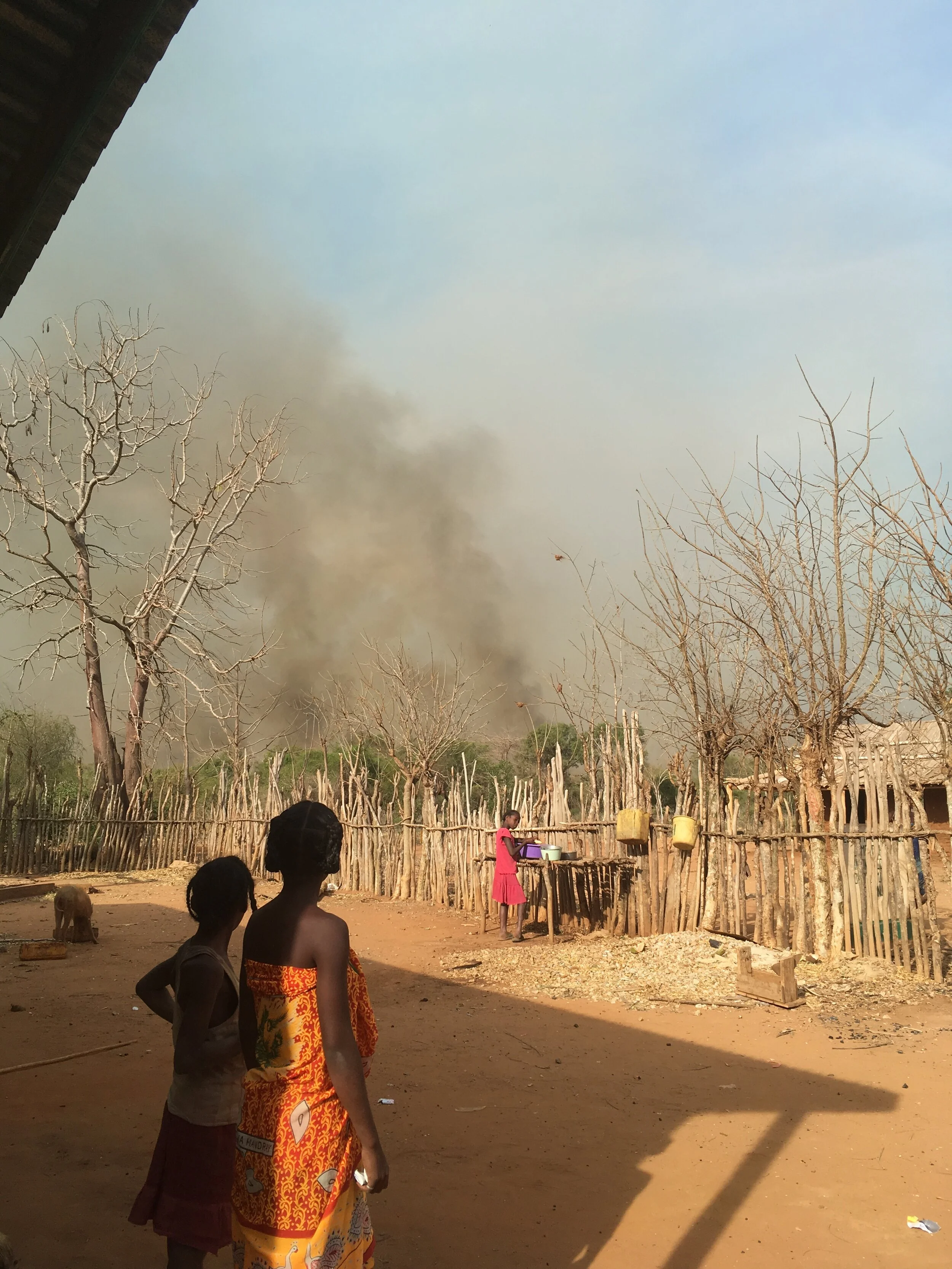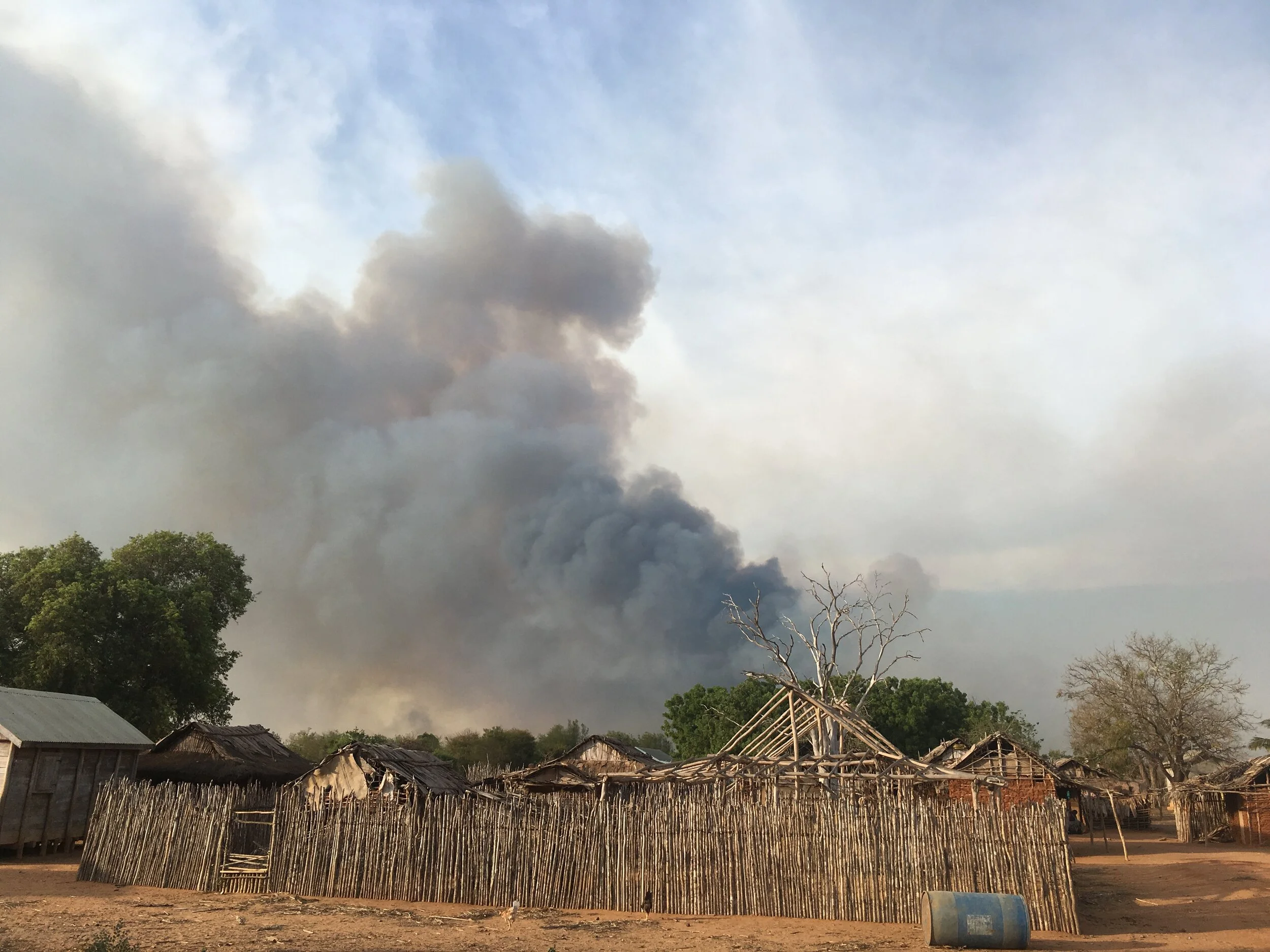Tavy: Slash and burn
By Kate Thompson, Safina Center Launchpad Fellow
I have always thought that words in the Malagasy language sounds as words truly ought to. Rano (rah-new), the word for water, is soft and streaming and lingers like a trickle of sound. Ala (ah-lah), meaning forest, reaches tall and singular, like a sunlit stand of trees. Matanjaka (mah-tawn-zak-ka), meaning strong, is quick and sharp, forceful in how it announces itself. Afo (ah-foo) burns close to the ground, and the second syllable dissipating like smoke. Like the heady black plumes that shifts with the winds on the outskirts of our town. Afo blowing closer, smoldering over bushes and wilted crops with smothering heat. Fire. We are surrounded, on three sides, by crackling columns of ash and fire.
Photo: Kate Thompson
Tavy is the traditional practice of slash-and-burn agriculture, used by many rural Malagasy today to clear new land for farming. It can be seen as a preparing the land for planting but is also something more culturally significant: it is the process of bringing land into a state of usefulness. Perhaps like christening a ship, driving your new car off the lot, cutting the ribbon on a new building with ceremonial, oversized sheers. And it’s more than that too. It is the action of spreading and planting roots, of making the earth fertile to receive the future. Of seeding into the soil the name of your ancestors and your descendants to come.
It is also strictly illegal, especially within protected areas. Madagascar has lost as much as 90% of its original forest cover. An estimated 200,000 hectares are lost annually. According to the World Wildlife Foundation and Conservation International “if the rate of forest reduction remains at current level i.e. 0.55 per cent per annum, all of Madagascar’s forests will be lost within 40 years.” Right now we are trying to decide if the fires of tavy, voracious and wild on dry branches and crackling soil, will consume our town. These trees. These houses.
Photo: Kate Thompson
Our neighbors have hefted the values out of their house and we do the same. For them, bundles of foam mattress, clothes, and food tied into blankets wait in bulky heaps outside houses. I glance around our house and mentally heap items into three piles. iPads for data collection- carry out. Laptop, GPS, money- carry out. I fill my hiking backpack with hard-drives and notebooks of the data on illegal hunting I’ve collected over the months. Pictures of friends. “One Hundred Years of Solitude.” Cheap earrings from Old Navy and expensive field clothes from REI– to stay. To perhaps burn. Dry bags, hiking boots, scales for measuring people and bones- hefted into a clearing, far from trees, and left to hope for the best. And we wait with the rest of the town, as winds blow unpredictably left and right and we realize even if we were to run into the forest, we couldn’t be sure that we weren’t running to rendezvous with the flames somewhere else. The road out, towards the salt flats, and nearest town 4 hours by foot away, is now engulfed in flames. The sky is intermittently blue and streaked with curling columns of smoke.
The connection to Facebook however, is incredibly clear. I message my best friend, who alerts the US Embassy to the forest fires spreads across the western region of Madagascar. They weren’t aware of the blazes sparked by tavy. Sparked by accident. Sparked none the less. And we wait. Luckily for all of us in the village, the winds go down with the sun, and although the horizon glows orange through the night, the fire doesn’t come closer to the town than a two minutes’ walk. The fire burns here for three days, but we are okay. Its reincarnated itself at least three times over in our region since October. Other tavy, other fires, other slashes and burns seared into the forest. As the climate here continues to desiccate the landscape, this is always our horizon now. With luck, next month will bring the start of the rainy season. The start of new leaves for hungry lemurs, sowing crops for hungry humans, and heavy monsoons for a water-parched earth. It didn’t rain at all last year, in the early months of 2018. So, for now, our village waits. We watch the sky, and we wait.
Photo: Kate Thompson



